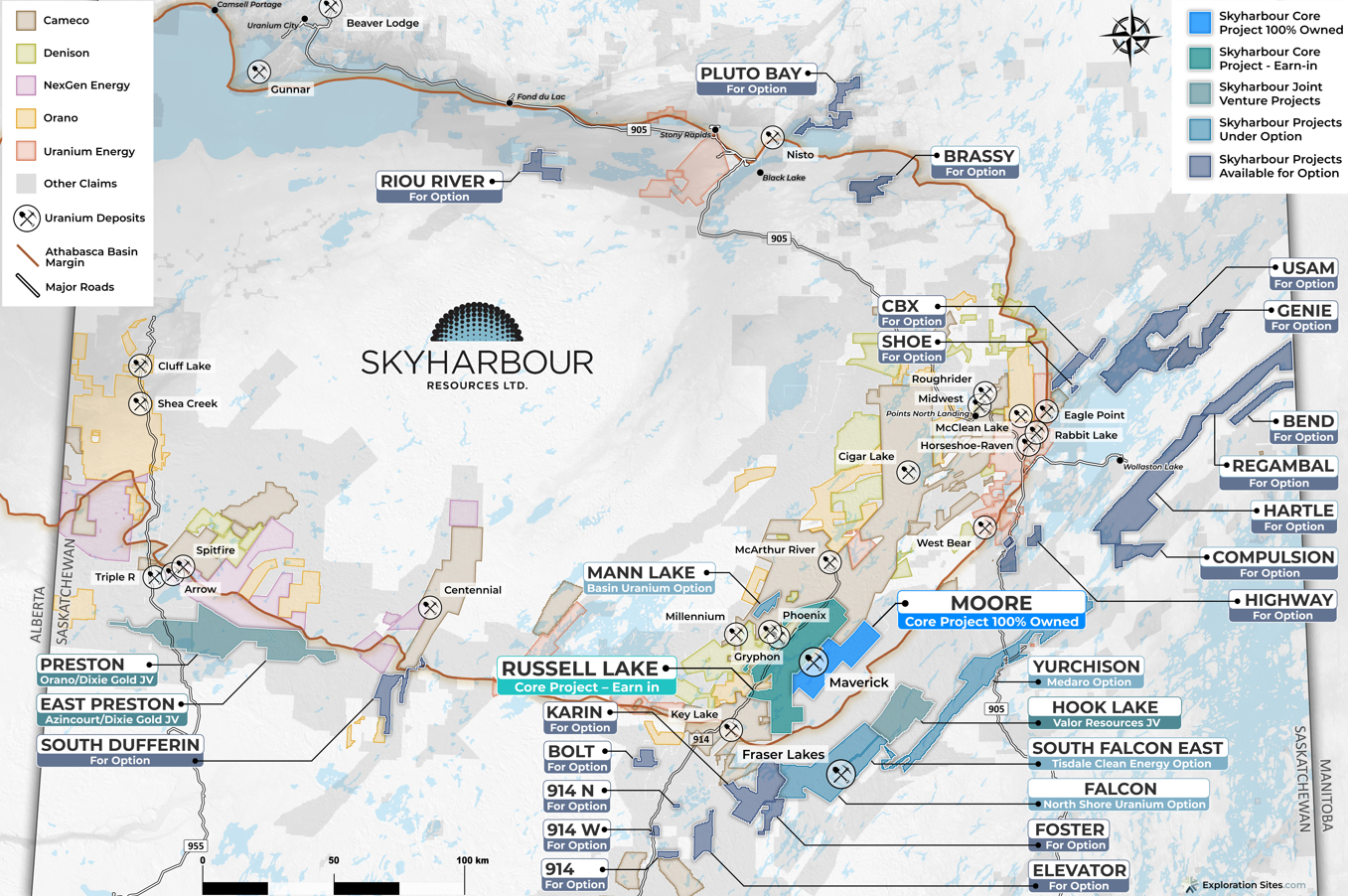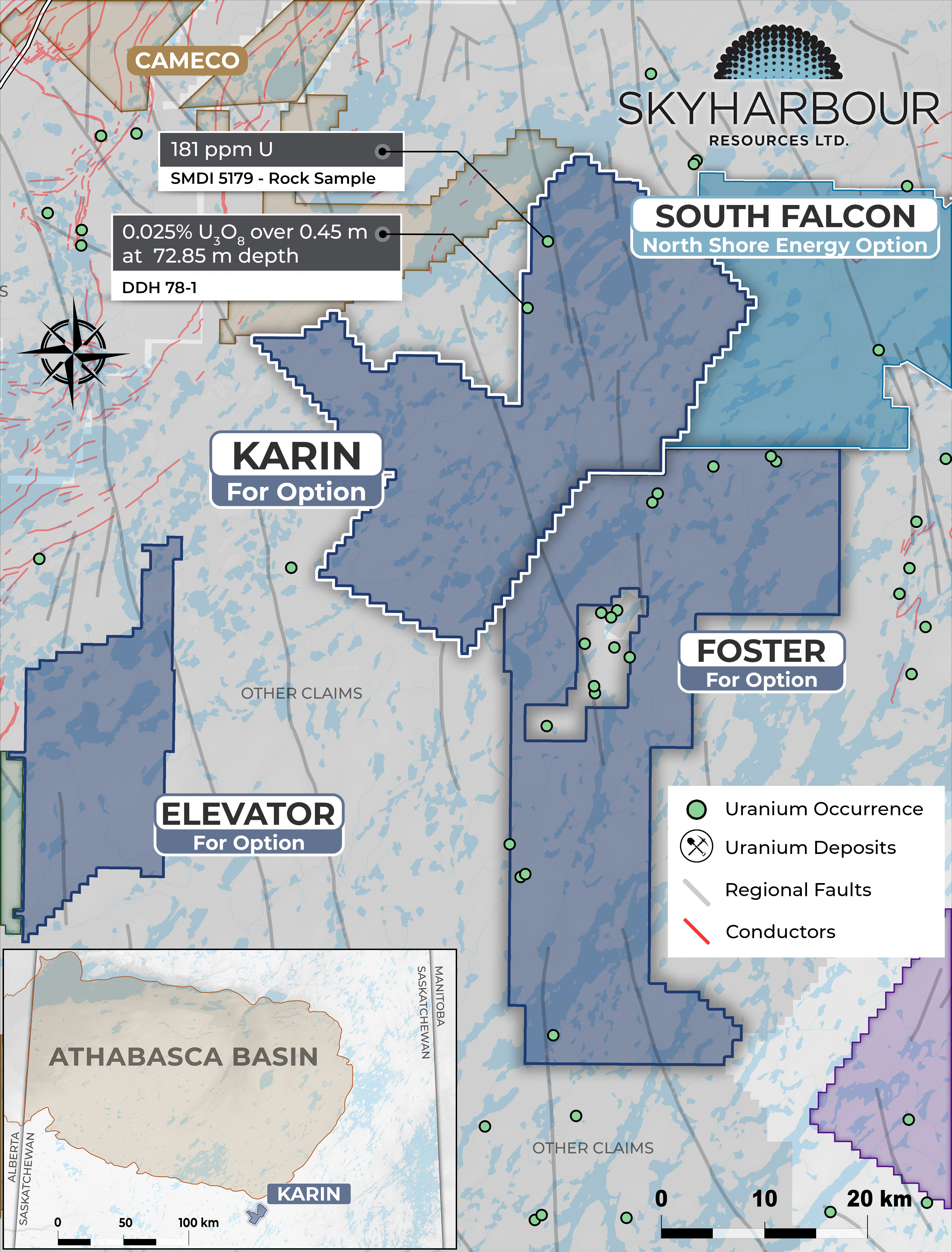Karin
The Karin Project consists of 7 claims totalling 25,165 hectares in the Highrock Lake area. The project is underlain by Wollaston Group metasedimentary gneisses, mostly psammitic to meta-arkosic in composition but with localized prospective pelitic to psammopelitic gneisses in fold noses, and it is prospective for both unconformity-related and pegmatite-hosted uranium mineralization.
The Karin project, including the new claim, had seen some exploration in the late 1960's to early 1980's, including airborne EM, magnetics and radiometrics, radon surveys, prospecting, geological mapping, lake water and sediment sampling, as well as a limited amount of diamond drilling. Two drill holes were attempted on the new claim added to the Karin project, however both attempts were lost during casing. Five drill holes that were successfully drilled on the remainder of the Karin project intersected Wollaston Supergroup meta-arkose and semipelitic to pelitic gneisses, amphibolite and pegmatite to granodiorite, along with localized hematite, chlorite, epidote, and/or goethite alteration. One of these drillholes, 78-1, intersected a weakly radioactive pegmatite which returned 0.025% U3O8 over 0.45 m at a depth of 72.85 m (AF 74H03-0036). The drilling on the Karin project was targeting some of the stronger EM conductors and radon anomalies on the property, however several other historical EM anomalies did not receive follow-up work. Given that this work took place prior to the development of modern geophysics and uranium exploration models, it is likely that additional prospective targets remain untested on the Karin project. The only recent exploration on the project consisted of limited prospecting in 2008, which led to the discovery of a pegmatite outcrop that returned 181 ppm U, 205 ppm Nb, and 39 ppm Ta (SMDI 5179). The Karin project has otherwise been unexplored since the 1980's and remains prospective for both intrusive-type and unconformity-related uranium deposits and intrusive-related REE's.
Karin Project Map:


